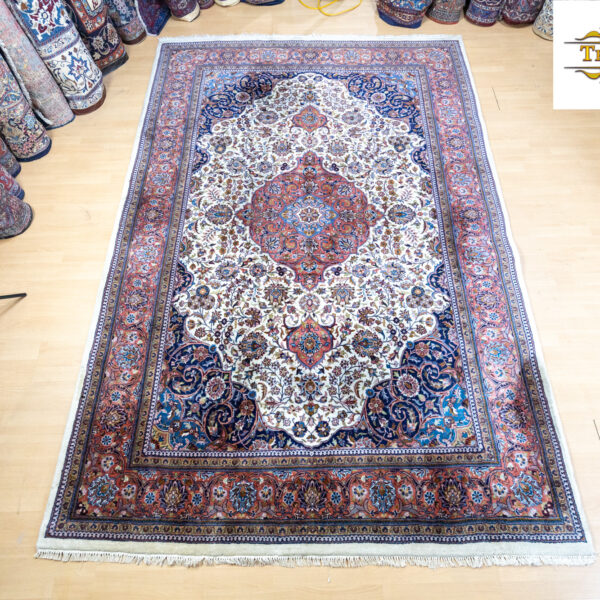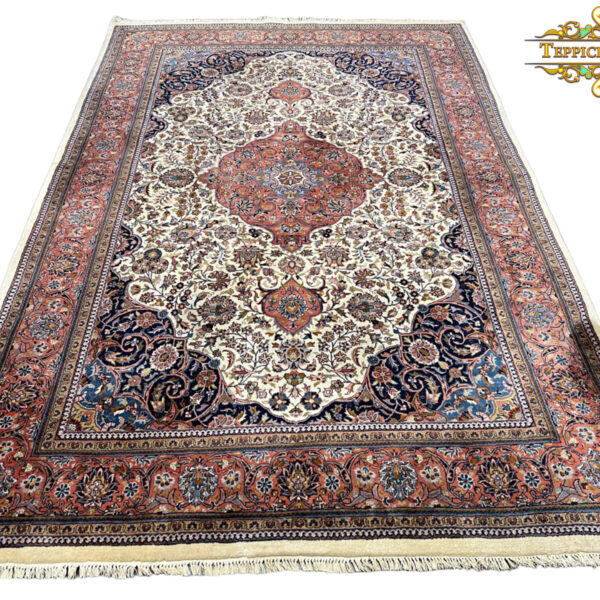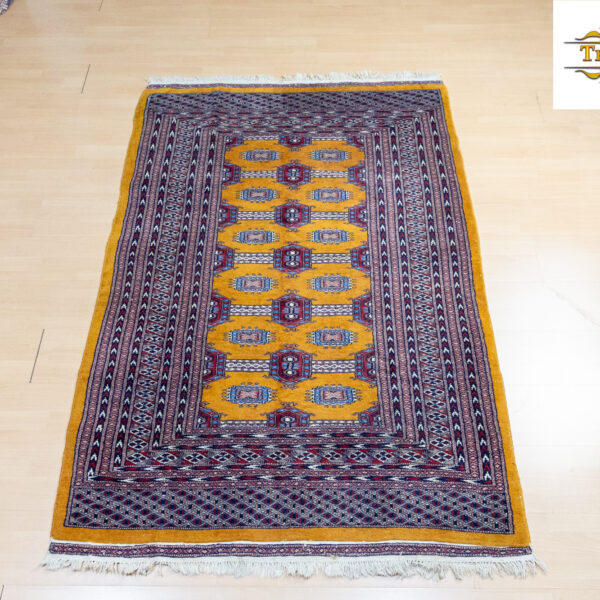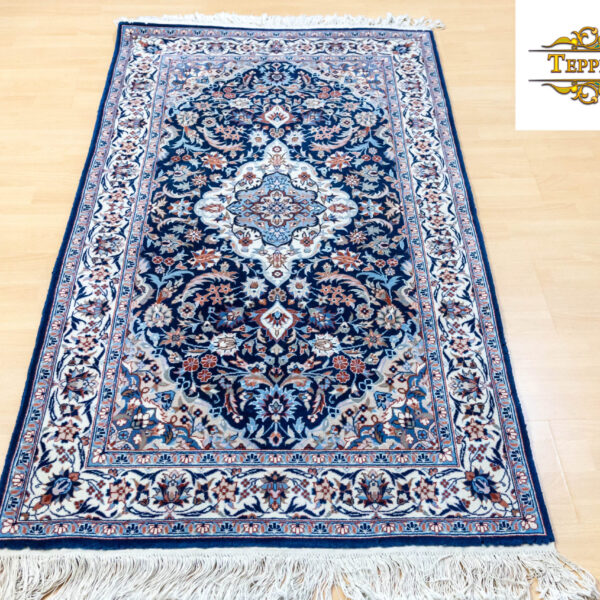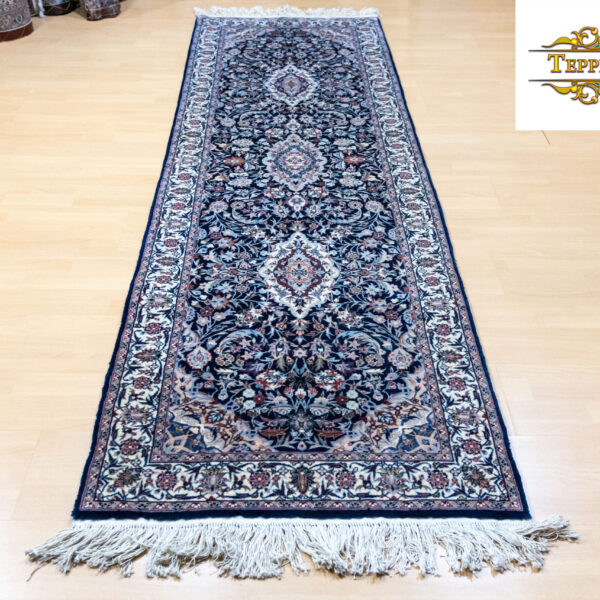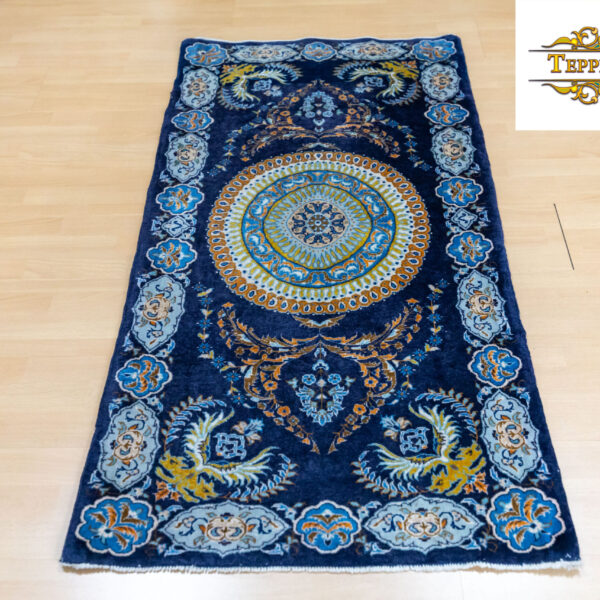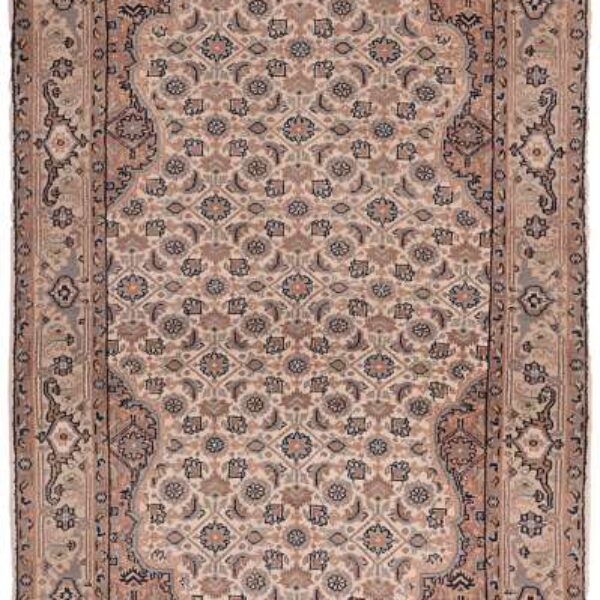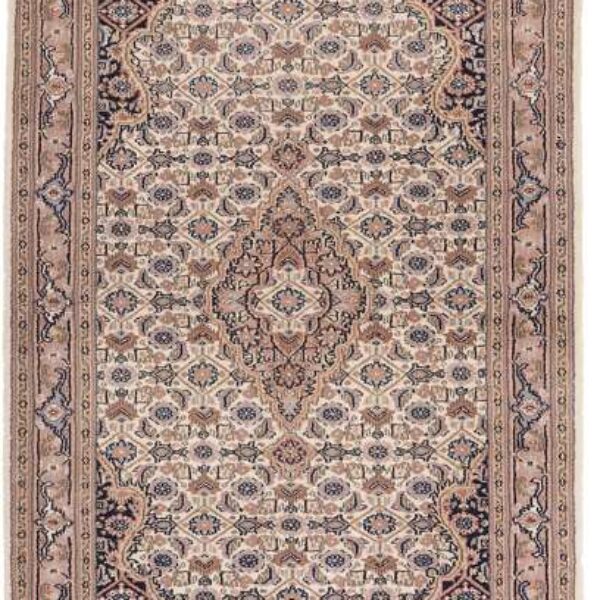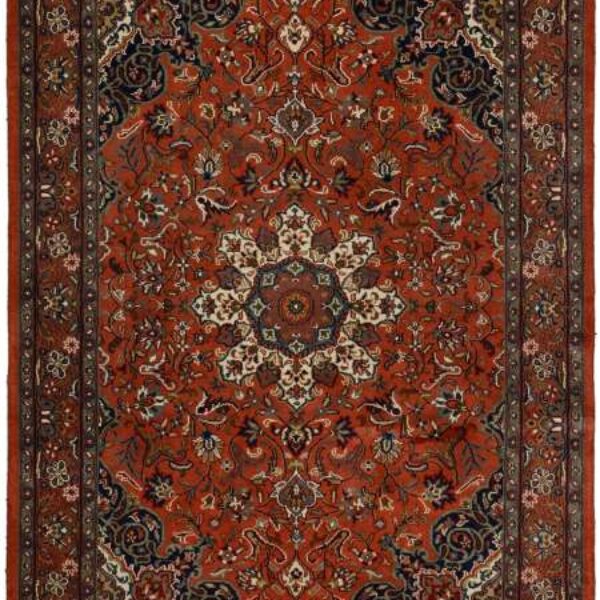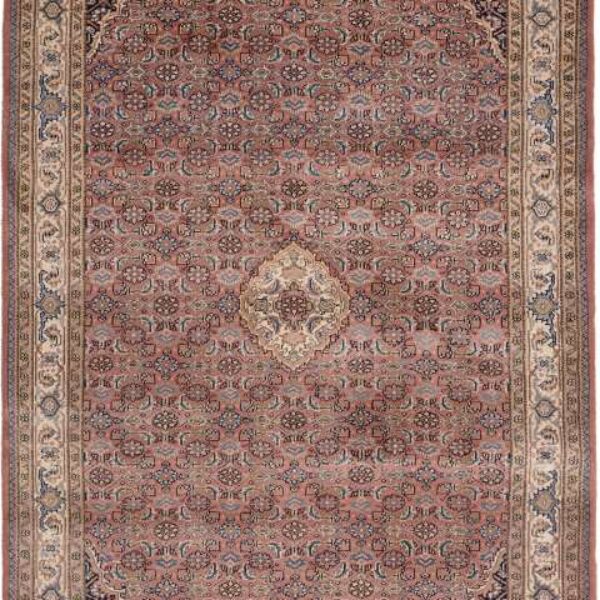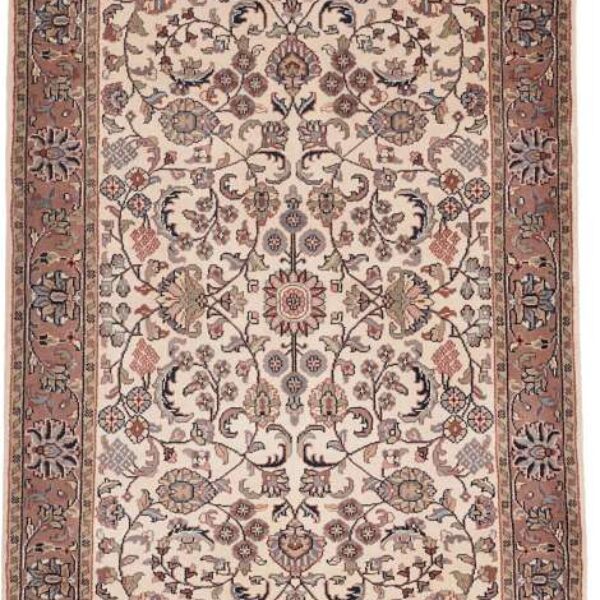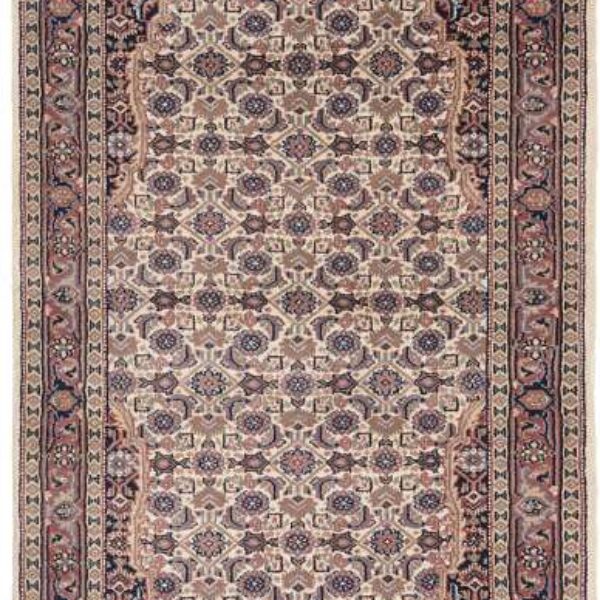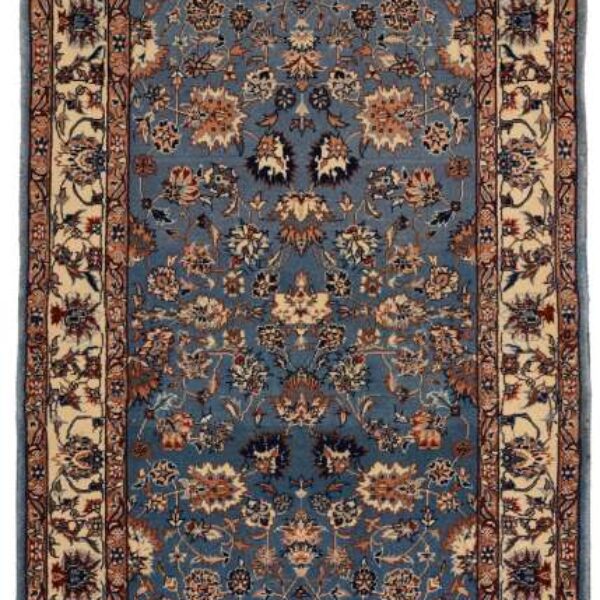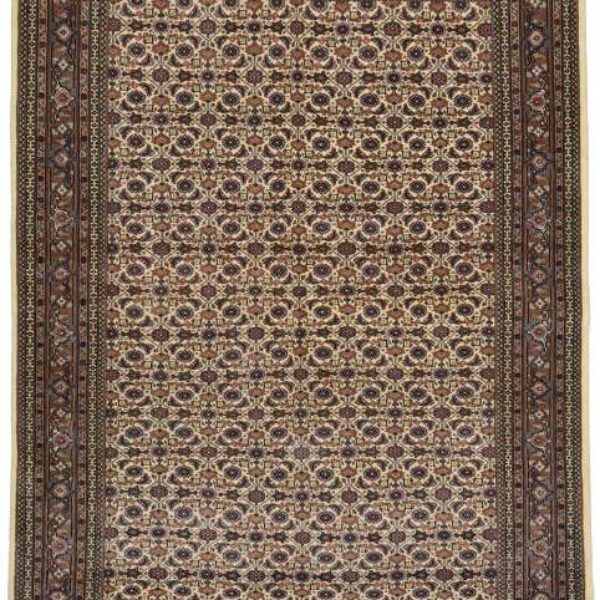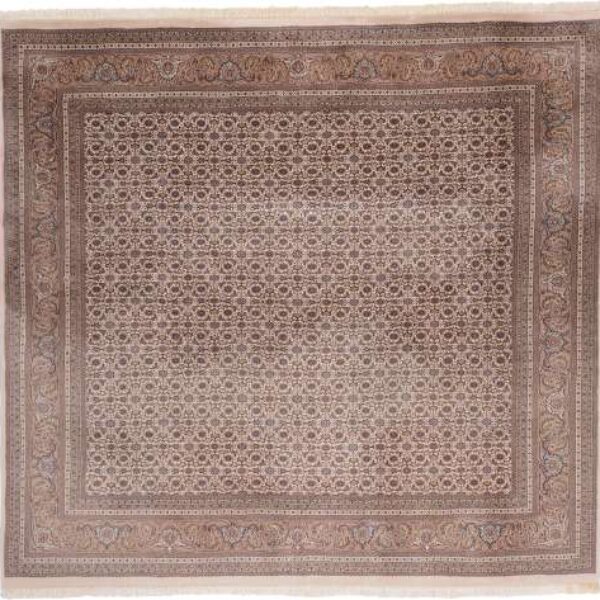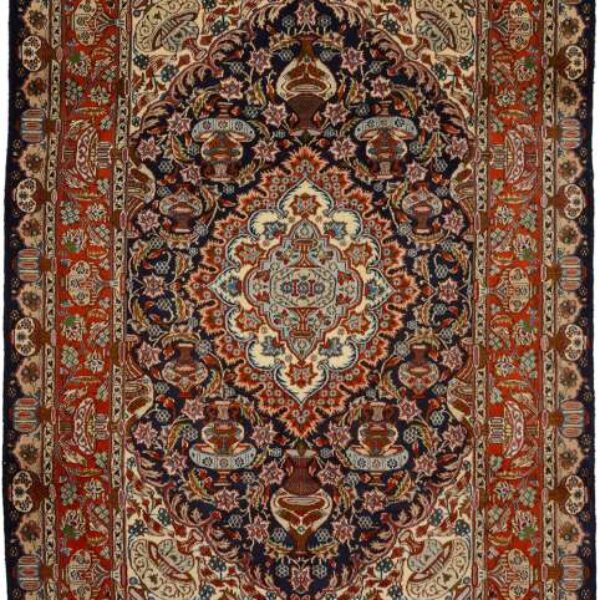Qom
Ghom silk carpets (also Qum or Ghom)
Qom carpets are made in the city of Qom, which is located in central Iran about 100 kilometers from the capital Tehran.
Often referred to as a holy city, Qom province is famous for its rich religious history and monuments, as well as for its high-quality pure silk carpets. Some of the finest Persian carpets are made in this religious city, although the history of carpet weaving in Qom is relatively young compared to other provinces.
Carpet weaving in Qom began in the 1930s when carpet traders from nearby Kashan brought their looms to Qom Oasis along the historic trade route.
Once established, weaving flourished, and weavers incorporated a variety of styles into their creations.
Most of the styles used for these rugs come from different parts of Persia and the Caucasus, so the rugs from this region show a combination of very different styles, ranging from ornate and intricate medallions and angular designs to bold hunting rugs and painterly designs, depict scenes of daily life.
The Master Weavers of Qom
The master weavers of Qom used ultra-fine silk fibers in their weaving.
The small diameter of the silk fiber allowed weavers to create minute details such as folds, draping, and fine lines in their designs.
This gave the designs an added complexity not found in many other types of carpet. Whether the rugs depict one person, animal or motif, or several in a small area, the details are consistent and this sets Qom rugs apart from other rugs in the region. This has earned the city a reputation for being one of the finest producers of high quality silk carpets in Persia.
Despite the fact that most patterns were copied from other styles, Qom carpets have retained their distinctive characteristics. This is due to the construction of the carpets.
Characteristics of the carpets from Qom
Qom, the center of Shia theocracy, is one of the holiest cities in Iran. This very old city has a rich religious history and many impressive architectural monuments dominate the landscape. The carpets made in this area are also called Qom, Ghom, Ghum, Ghoun or Kum.
Carpet production in Qom began in the 1930s when carpet weavers from Kashan came to the city of Qom, attracted by the prospect of setting up their looms in this oasis.
With their arrival, weaving flourished. The skilled weavers have incorporated different styles into their creations while maintaining the characteristic features of traditional Qom rugs. The result was rugs with an interesting mix of styles, linked through a creative combination of colors and patterns.
Some weavers created tapestries depicting specific landscapes or even historical events.
What materials are used for Qom rugs?
They are one of the few types of Persian rugs made entirely of silk. Both the background and the pile are made of natural silk. This tradition of weaving exclusively silk is believed to be due to the particular composition of the water in the region. When the natural silk carpet is washed in this water, it will become very shiny and the color will be vivid and stable.
The main difference between real and fake Qom rugs is that the former are made from natural silk while the latter are made from synthetic commercial silk. If you're thinking of buying a Qom rug, there are three tests you can use to tell if it's made of natural or artificial silk:
1. Take a good look at the shine of the carpet. Does it have a soft, natural sheen, or does it look too shiny and shimmery? Natural silk rugs have a softer, natural sheen that is not overly shiny.
2. Feel the softness of the carpet. A natural silk rug is soft and fluffy, while a synthetic fiber rug is not as soft.
3. Rub the surface of the stack with the palm of your hand for a few seconds. Is the feeling cold or warm? Real silk emits heat when rubbed and feels warmer than synthetic rugs, which stay cold.
Few carpets in this region are made from wool. The cork is a famous carpet in Qom, made from the wool of young sheep.
The cork has a soft, shiny appearance.
What are the typical colors of Qom carpets?
Qom rugs generally have very light and soft colors.
The fields of these carpets are usually kept in a shade of red or mid-blue.
Average knot area of Qom carpets
The average number of knots in Qom carpets ranges from about 200 KPSI (knots per square inch) to 500 KPSI. This is a very high number of knots, especially considering that these rugs are made entirely by hand. The high number of knots is due to the fine silk used for these pieces, but it also means that the weavers took a long time to complete each rug.
The knots per square inch or KPSI are used to measure the density of knots. It is also one of the components that determine the quality and value of a carpet. The higher the number of knots, the higher the quality of the carpet and the higher its cost. The carpets from Qom are characterized by an exceptionally high number of knots and are valued for their very high quality.
The type of knot used is the asymmetric Persian knot, also known as the Senneh knot. It is an asymmetrical knot in which the thread loops around one of the warp threads and is left free under the other warp thread.
The stack
The pile of the Ghom carpets is usually made of high-quality silk or cork wool. Different carpets contain different combinations of materials. In some rugs, the pile may be silk on a silk and cotton base.
In other rugs, the pile may be wool, with silk accents generally being used to define the pattern of the rug. Only silk is used for higher-quality pieces. They have a silk pile on a silk backing.
Weaving techniques used
The weavers use a unique weaving technique to create their beautiful creations. In this technique, the top end resembles a kilim, with a flat area woven into the end of the rug just before the fringes. The ends end in a knotted fringe ribbon. The lower part of the rug is characterized by twisted, uncut loops.
Very fine silk threads are used to create the carpets. The fine diameter of the threads made it possible to design each line down to the smallest detail. Even the smallest detail is clearly visible on the finished carpet.
“Errors and mistakes excepted”

